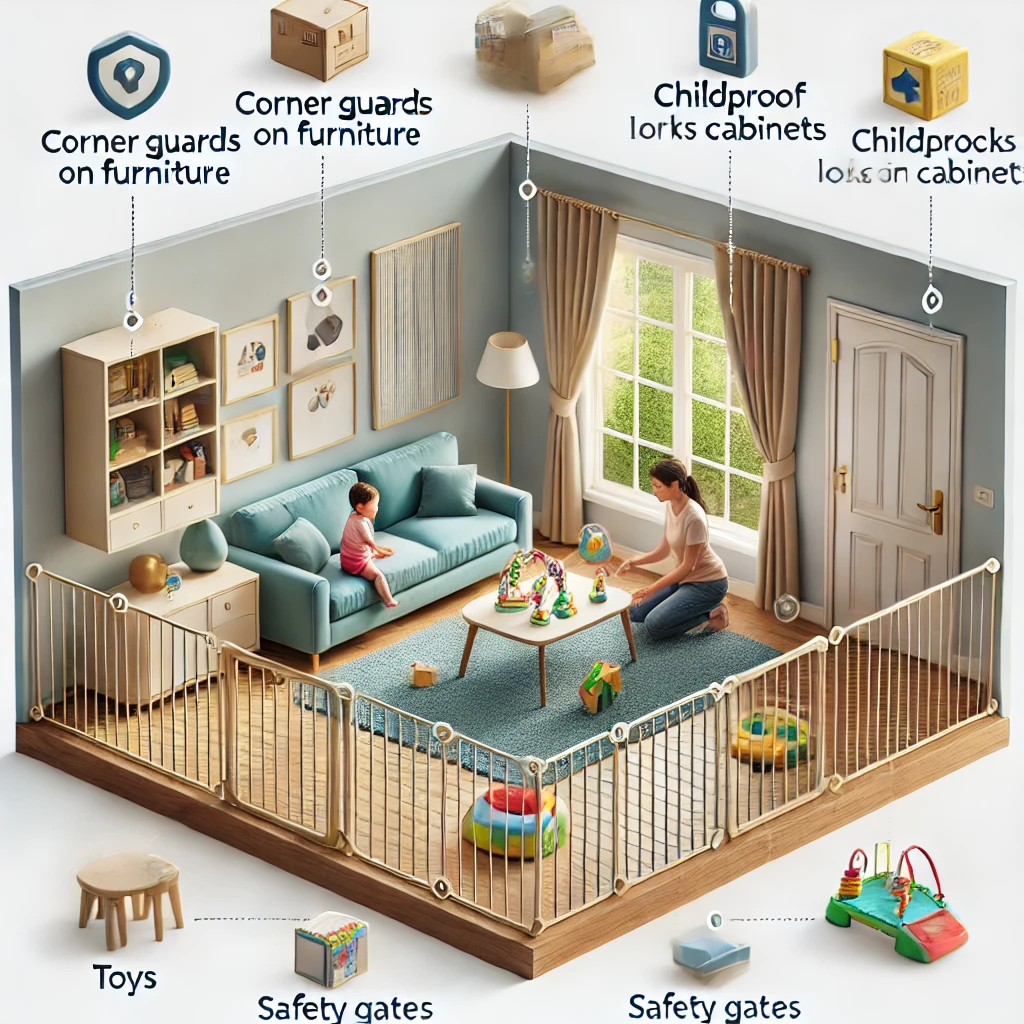Creating a safe home environment for your child is crucial for their well-being and your peace of mind. With a few proactive steps, you can minimize risks and ensure that your home is a safe place for your little ones to explore and play. Here are some essential safety tips for a child-friendly home.
1. Secure Furniture and Appliances
Unsecured furniture and appliances can pose a significant risk to young children who love to climb and explore.
Tips:
- Anchor Furniture: Secure bookshelves, dressers, and other heavy furniture to the wall to prevent tipping.
- Secure TVs: Mount flat-screen TVs on the wall or use anti-tip straps to secure them to a stable surface.
- Appliance Safety: Ensure that appliances like stoves and ovens are secured and have safety locks.
2. Childproof Cabinets and Drawers
Children are naturally curious and love to open cabinets and drawers, which can sometimes contain hazardous items.
Tips:
- Cabinet Locks: Install childproof locks on cabinets and drawers that store cleaning supplies, medications, and sharp objects.
- Safe Storage: Keep dangerous items out of reach or in high cabinets that children cannot access.
- Organize Safely: Store heavy items on lower shelves to prevent them from falling.
3. Use Safety Gates
Safety gates are essential for keeping children away from potentially dangerous areas like stairs and kitchens.
Tips:
- Stair Gates: Install gates at the top and bottom of stairs to prevent falls.
- Room Barriers: Use gates to block off rooms that are not childproofed or contain hazards.
- Secure Installation: Ensure that gates are securely installed and cannot be easily dislodged by a child.
4. Protect Against Sharp Edges
Sharp edges on furniture and fixtures can cause injuries to young children who are still learning to walk and navigate their environment.
Tips:
- Corner Guards: Place corner guards on sharp edges of tables, countertops, and other furniture.
- Edge Bumpers: Use edge bumpers on low furniture that children might bump into while playing.
- Regular Checks: Regularly inspect your home for any new sharp edges that might need protection.
5. Ensure Electrical Safety
Electrical outlets and cords can be very tempting for young children but pose serious risks.
Tips:
- Outlet Covers: Use outlet covers or plates to prevent children from inserting objects into electrical outlets.
- Cord Management: Keep electrical cords out of reach and use cord organizers to prevent tangling.
- Unplugging: Unplug appliances when not in use and keep cords from dangling where children can pull on them.
6. Create a Safe Play Area
Designating a safe play area allows children to explore and play freely without constant supervision.
Tips:
- Soft Mats: Use soft play mats to cushion falls and provide a comfortable play surface.
- Toy Organization: Keep toys organized in bins or shelves to prevent tripping hazards.
- Safe Toys: Ensure that all toys are age-appropriate and do not have small parts that could be a choking hazard.
7. Monitor and Educate
Supervision and education are key components of keeping your child safe at home.
Tips:
- Supervision: Always supervise young children, especially in potentially dangerous areas like the kitchen or bathroom.
- Teach Safety: Educate your child about safety rules, such as not touching hot surfaces or staying away from sharp objects.
- Emergency Plan: Have an emergency plan in place and teach your child what to do in case of an emergency.
Conclusion
Making your home child-friendly involves taking proactive steps to ensure safety and minimize risks. By securing furniture, childproofing cabinets, using safety gates, protecting against sharp edges, ensuring electrical safety, creating a safe play area, and maintaining supervision, you can create a secure environment for your child to grow and explore. Prioritize safety to provide a nurturing and worry-free home for your family.
